Tirthankar Dasgupta
Design Stability in Adaptive Experiments: Implications for Treatment Effect Estimation
Oct 25, 2025Abstract:We study the problem of estimating the average treatment effect (ATE) under sequentially adaptive treatment assignment mechanisms. In contrast to classical completely randomized designs, we consider a setting in which the probability of assigning treatment to each experimental unit may depend on prior assignments and observed outcomes. Within the potential outcomes framework, we propose and analyze two natural estimators for the ATE: the inverse propensity weighted (IPW) estimator and an augmented IPW (AIPW) estimator. The cornerstone of our analysis is the concept of design stability, which requires that as the number of units grows, either the assignment probabilities converge, or sample averages of the inverse propensity scores and of the inverse complement propensity scores converge in probability to fixed, non-random limits. Our main results establish central limit theorems for both the IPW and AIPW estimators under design stability and provide explicit expressions for their asymptotic variances. We further propose estimators for these variances, enabling the construction of asymptotically valid confidence intervals. Finally, we illustrate our theoretical results in the context of Wei's adaptive coin design and Efron's biased coin design, highlighting the applicability of the proposed methods to sequential experimentation with adaptive randomization.
StayLTC: A Cost-Effective Multimodal Framework for Hospital Length of Stay Forecasting
Apr 08, 2025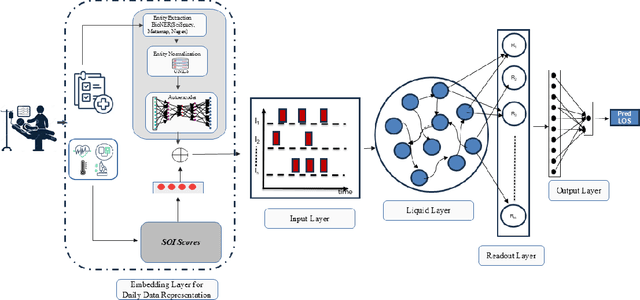
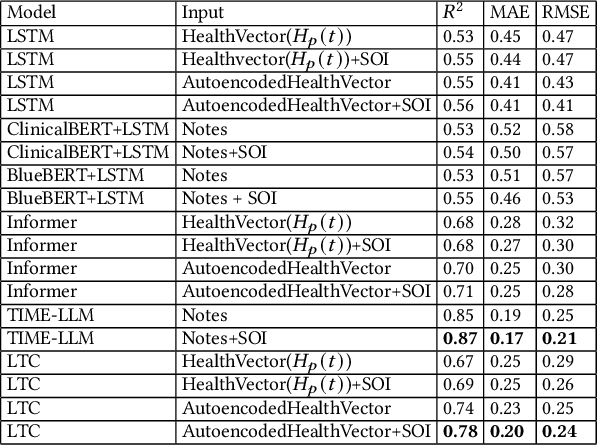
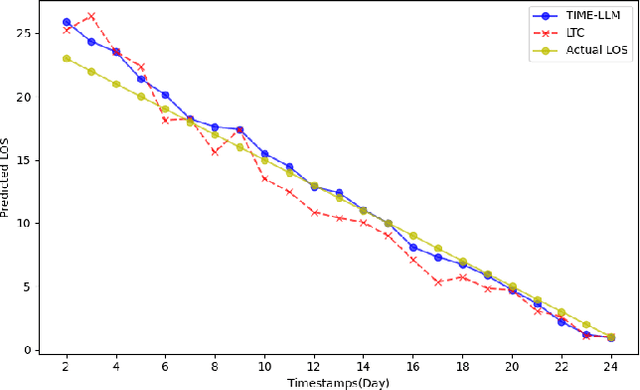
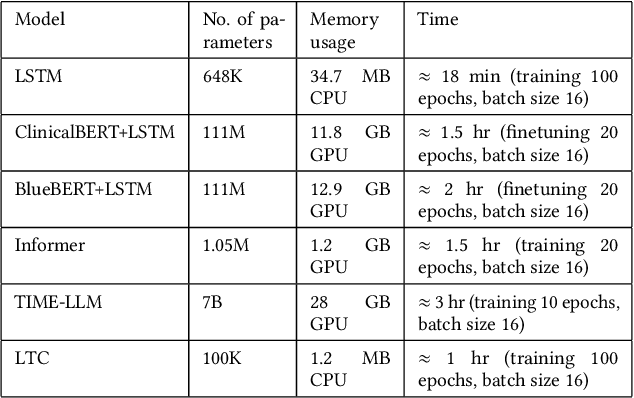
Abstract:Accurate prediction of Length of Stay (LOS) in hospitals is crucial for improving healthcare services, resource management, and cost efficiency. This paper presents StayLTC, a multimodal deep learning framework developed to forecast real-time hospital LOS using Liquid Time-Constant Networks (LTCs). LTCs, with their continuous-time recurrent dynamics, are evaluated against traditional models using structured data from Electronic Health Records (EHRs) and clinical notes. Our evaluation, conducted on the MIMIC-III dataset, demonstrated that LTCs significantly outperform most of the other time series models, offering enhanced accuracy, robustness, and efficiency in resource utilization. Additionally, LTCs demonstrate a comparable performance in LOS prediction compared to time series large language models, while requiring significantly less computational power and memory, underscoring their potential to advance Natural Language Processing (NLP) tasks in healthcare.
Mapping Patient Trajectories: Understanding and Visualizing Sepsis Prognostic Pathways from Patients Clinical Narratives
Jul 20, 2024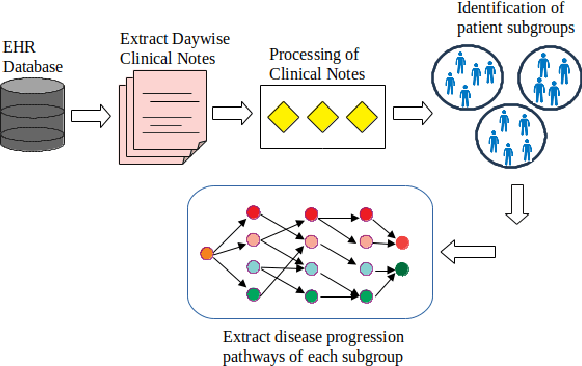



Abstract:In recent years, healthcare professionals are increasingly emphasizing on personalized and evidence-based patient care through the exploration of prognostic pathways. To study this, structured clinical variables from Electronic Health Records (EHRs) data have traditionally been employed by many researchers. Presently, Natural Language Processing models have received great attention in clinical research which expanded the possibilities of using clinical narratives. In this paper, we propose a systematic methodology for developing sepsis prognostic pathways derived from clinical notes, focusing on diverse patient subgroups identified by exploring comorbidities associated with sepsis and generating explanations of these subgroups using SHAP. The extracted prognostic pathways of these subgroups provide valuable insights into the dynamic trajectories of sepsis severity over time. Visualizing these pathways sheds light on the likelihood and direction of disease progression across various contexts and reveals patterns and pivotal factors or biomarkers influencing the transition between sepsis stages, whether toward deterioration or improvement. This empowers healthcare providers to implement more personalized and effective healthcare strategies for individual patients.
CLAIMED: A CLAssification-Incorporated Minimum Energy Design to explore a multivariate response surface with feasibility constraints
Jun 09, 2020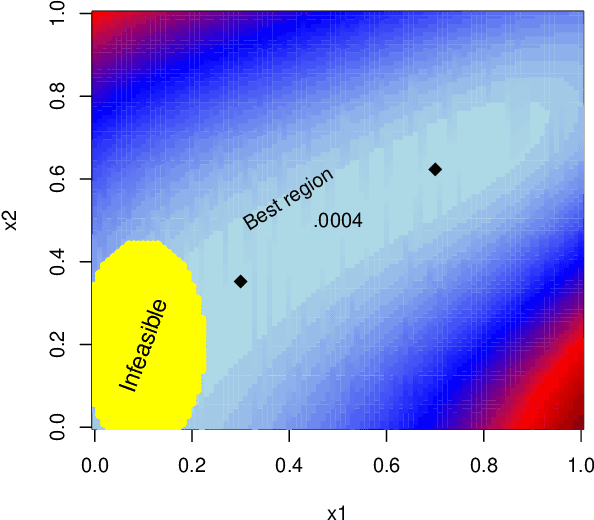
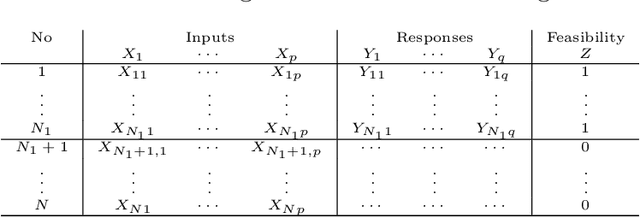
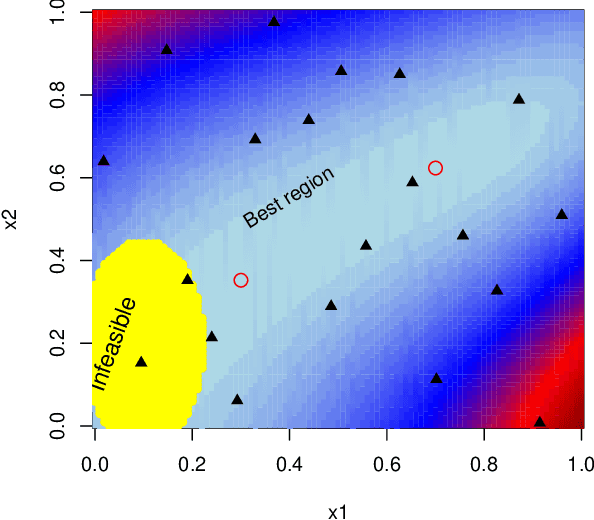
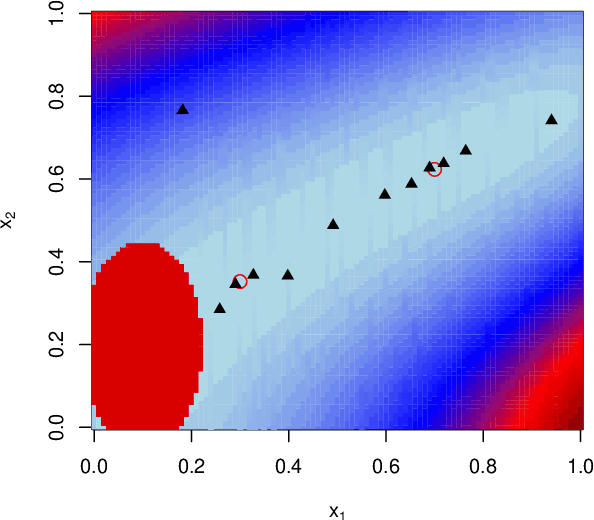
Abstract:Motivated by the problem of optimization of force-field systems in physics using large-scale computer simulations, we consider exploration of a deterministic complex multivariate response surface. The objective is to find input combinations that generate output close to some desired or "target" vector. In spite of reducing the problem to exploration of the input space with respect to a one-dimensional loss function, the search is nontrivial and challenging due to infeasible input combinations, high dimensionalities of the input and output space and multiple "desirable" regions in the input space and the difficulty of emulating the objective function well with a surrogate model. We propose an approach that is based on combining machine learning techniques with smart experimental design ideas to locate multiple good regions in the input space.
 Add to Chrome
Add to Chrome Add to Firefox
Add to Firefox Add to Edge
Add to Edge